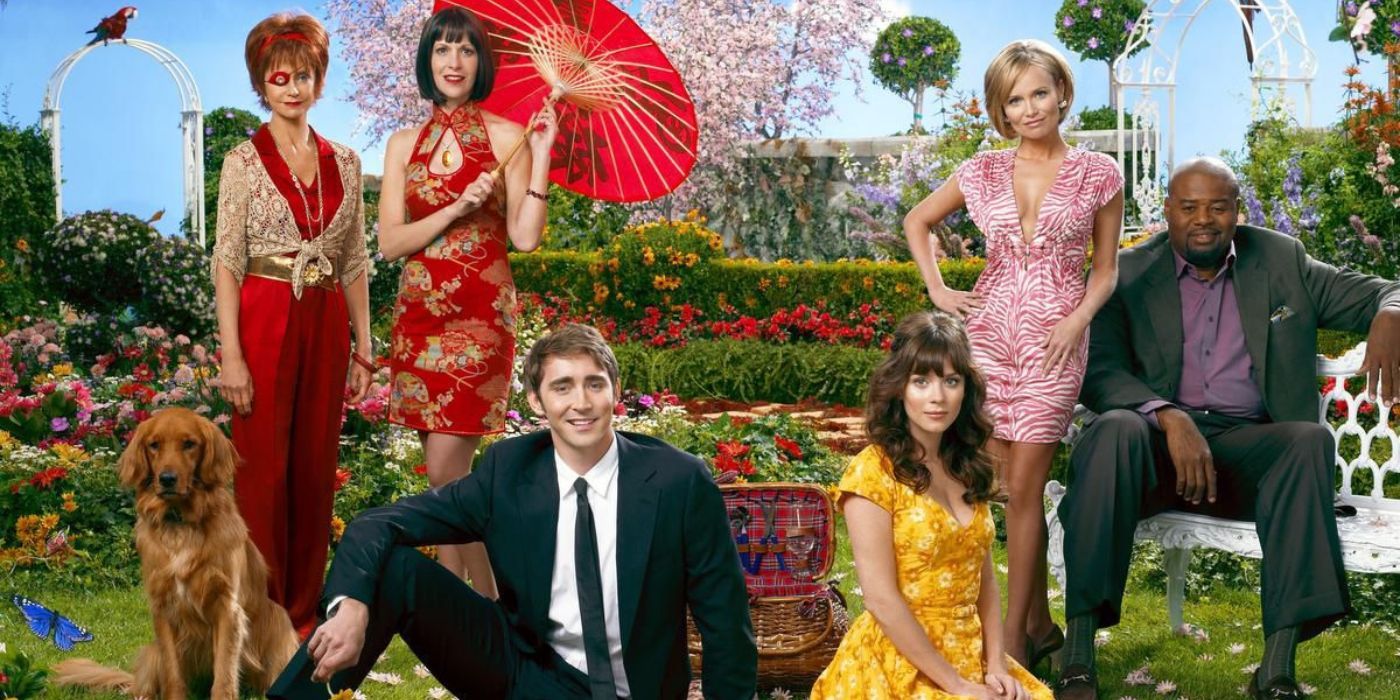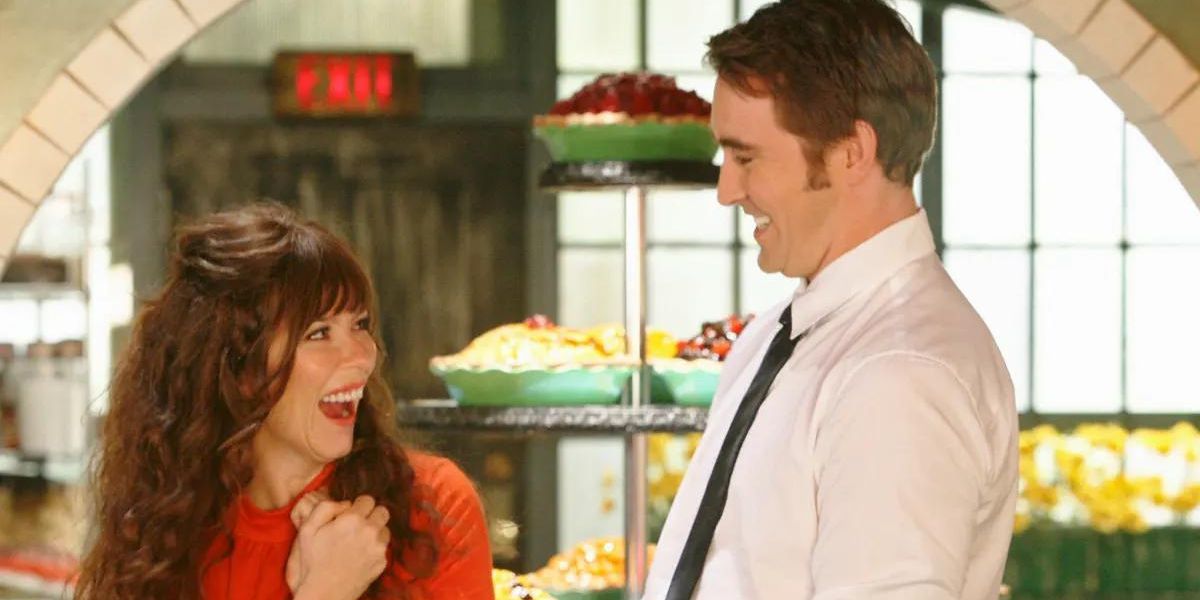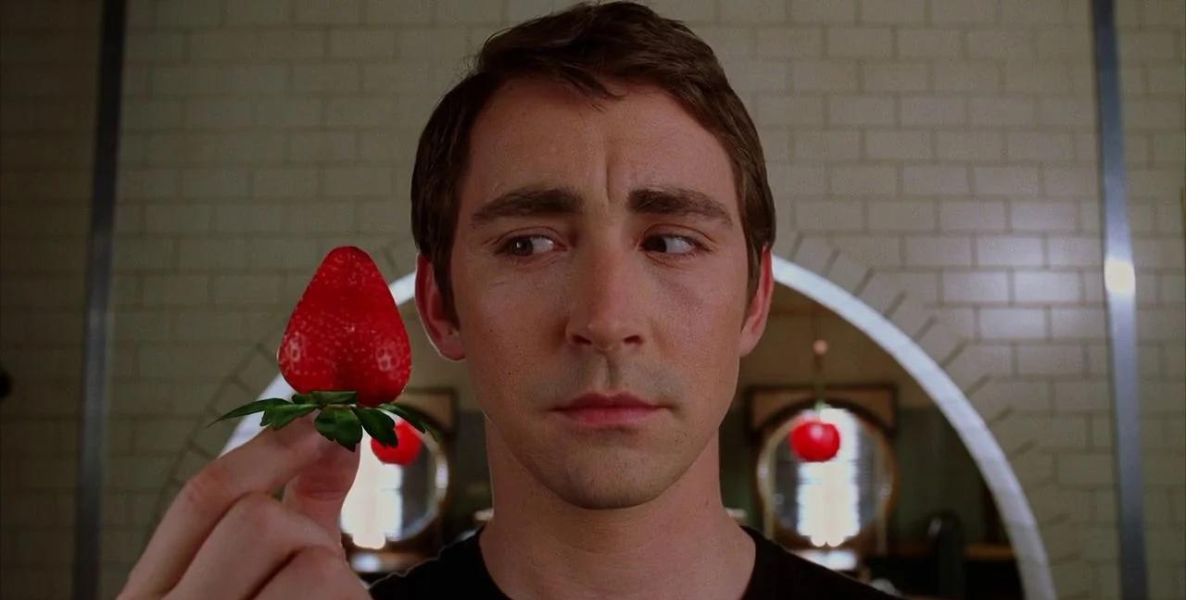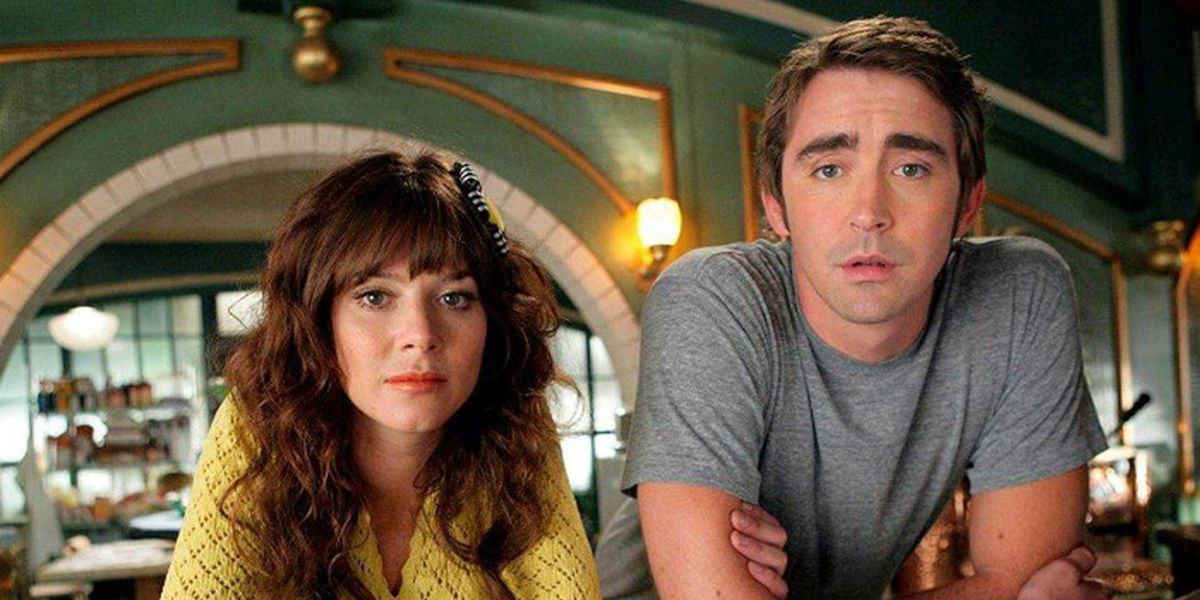“At that moment, time stopped, as it is wont to do when present, past, and future collide.” With these words, the formerly calendar-obsessed narrator (Jim Dale) begins to end Bryan Fuller’s Pushing Daisies. Abruptly canceled in 2009 while still in the midst of its second season, Fuller and crew hurriedly added a button on their planned cliffhanger that both wrapped up loose ends and left room for resurrection. And now is the time for just such a return from the dead: a Pushing Daisies movie. Between Lee Pace’s well-deserved surge in popularity and this moment’s demand for dark comedies, Pushing Daisies' uniquely candy-colored darkness — a perky romcom steeped in gruesome death and bone-deep loneliness — is a perfect answer to this moment, bringing a sweet tooth to its pitch-black laughs. In a time of finding joy in the darkness, a Pushing Daisies movie would give us a welcome second serving of a show that was gone too soon.
What Happened to 'Pushing Daisies'?
Of course, the time would always be right for more Pushing Daisies. The fast-talking, plastic-wrap-smooching, death-defying series is beloved as much for its quick wit as for its dazzling design and thorough world building. It’s the story of Ned (Pace), the Pie Man, a sweet loner with astonishing powers in the kitchen and the mortuary. As a child, he discovered he had the power to bring living things back from the dead, but with two catches: if he touched them again, they’d die permanently, and if he didn’t touch them again within 60 seconds, someone else would die in their place — a “random proximity thing.” He spent his days baking at the Pie Hole with long-suffering Olive (Kristin Chenoweth) and his nights moonlighting as a very specifically skilled partner to private eye Emerson Cod (Chi McBride), bringing both fruit and murder victims back to (very brief) life and reaping the rewards, but keeping himself always out of emotional reach. But when one such victim turns out to be his childhood sweetheart Chuck (Anna Friel), Ned can’t bring himself to do what he knows he should. RIP, funeral director/graverobber in random proximity — hello, love.
Over the course of 22 episodes, Ned, Chuck, Olive, and Emerson solved crimes and became a makeshift family in a winsome and pastel-shaded world. It’s a fairy tale, both in its unrelentingly perky optimism and its deep delight in the macabre. Fields of flowers and deep-fried corpses live and die side-by-side with our heroes. Ned’s love for Chuck brings him out of his self-imposed shell, and Chuck’s embrace of her second chance leads her to trying things she never would have in her first life. They can never touch again, so they hold hands through plastic and dance in beekeeper suits, solving the conundrums of their own lives and giddily over-the-top murders. But just as one of Pushing Daisies' biggest mysteries was resolved — Chuck revealing herself as alive to her aunt (Ellen Greene) and secret mother (Swoosie Kurtz), recently unretired synchronized swimmers the Darling Mermaid Darlings — Pushing Daisies ended. The ever-present narrator assured us that this was one of those moments that cannot be measured in minutes, days, or years, but only in feeling, and with the quickest of recaps of things to come for Emerson and Olive, he left us on the doorstep, Ned and Chuck ready for a new chapter in their new lives.
A 'Pushing Daisies' Movie Would Give Us More Lee Pace!
While Pushing Daisies was serialized, with Ned and Chuck’s rekindled romance blooming and the secrets of her parentage unfolding, the show was, at its core, episodic. Each week offered a new quirky mystery to solve, a new dizzyingly imaginative location to visit, and a new crop of high-wattage guest stars to kill and be killed. This lends itself perfectly to a Pushing Daisies movie: standalone stories are part of the show’s lifeblood, and the achingly abrupt ending to the series means there’s no retconning required — the permanence of Ned’s powers and the wide-open ending mean a Pushing Daisies movie could take the story anywhere its delightfully dark but ever-beating heart desired. Plus, a supersized extravaganza would offer Pushing Daisies the space and scale to make the technicolor nightmare-dream that TV budgets and screen sizes can only aspire to.
But perhaps the best argument for putting Pushing Daisies on the big screen is that Lee Pace would be up there too. Pace is having a well-deserved moment; since his time in Coeur d'Coeurs, Pace has made high-profile forays into superhero movies, high fantasy, and horror. There are elements of all three in Pushing Daisies, making him even more suited to the world than he was 15 years ago. But at its core, Pushing Daisies is a swooningly romantic and equally funny love story, heartstopping in both its stakes — literally in this case — and the ways these two will work around them to be together. A return to the Pie Maker would also be a return to the quick-witted comedy and winning sweetness that are a central part of Pace’s already considerable appeal (did you know he is 6’5? I have a t-shirt that tells you so). He would bring his increased notoriety back to the Pie Hole, while Ned would give him back the sparkly-eyed and apple-cheeked kindness so central to his performance.
'Pushing Daisies' Fits Perfectly In Today's Demand for Dark Comedy
But Pace isn’t the only element of the show that’s having a moment right now. Dark comedies in general, and dark-comedy mysteries in particular, are in high demand. Netflix’s Wednesday is the streamer’s second-most-watched series, beaten only by Stranger Things — another genre show that mixes darkness and comedy, nostalgia and horror, with a strong aesthetic tying it all together. The times are hard; the outlook can feel awfully bleak. People are turning to entertainment that laughs into the abyss, finding something to delight in amid the darkness. Pushing Daisies is a perfect complement to this penchant for gallows humor, poking at the gloom and giggling at its depths. But it does so through bedazzled, rainbow-colored glasses. The darkness at Pushing Daisies’ core makes its lightness possible; its overwhelming joy is shot through with death and loneliness. It’s a funhouse mirror, reflecting back the zeitgeist’s thirst for bleak laughs with carnival lights and impossible proportions. Pushing Daisies was originally made in a time of national optimism; its particular brand of willful sunniness may be even better suited to a time when we're less likely to look on the bright side.
If finding the possibility in the grim is what Pushing Daisies does best, a movie couldn’t come at a better time. By the show’s untimely end, every character has woken up from one life into a new one (some more literally than others). In the world of Pushing Daisies, the veil between life and death is vanishingly thin, and death’s ever-presence only makes life more ravishing. Chuck can leave behind a life that was suffocating her for one of possibility. Ned can learn that he can’t avoid hurting people, but that embracing his own happiness helps him increase others’. In our world, we don't always get second chances. We don’t always get the opportunity to make our life new. But Pushing Daisies asks: what if you did? What if you had the chance to make a braver life, or a more vulnerable one, or one of more service? In both Coeur d'Coeurs and our world today, life is scary and death is around every corner — how do we choose to live in the face of that inescapable fact? In ways great and small, how can we make for ourselves the lives we want to live, amid the uncertainty and terror of our times? How can we make our lives — and the lives we touch — more beautiful, more joyful, more spontaneous, more connected?
Inside its fantastical set pieces and magic moments, dearly departed Pushing Daisies offers an answer: by looking the endings in the face and choosing to start over, this time with more sparkle. Pushing Daisies is a show all about recognizing the value in and the rarity of second chances, and it’s the perfect time to give the show its own. In that lamentably premature finale, our intrepid narrator continues: “At that moment in the town of Coeur d'Coeurs, events occurred that are not, were not, and should never be considered an ending — for endings, as it is known, are where we begin." It’s time for Pushing Daisies to begin again.




